Q4 2019 GDP growth
GDP growth for the European Union (EU27) was 0.2% in the fourth quarter (Q4) 2019 (compared to Q3 2019) and 1.2% (compared to Q4 2018).
GDP growth for the Euro Area or Eurozone (EA19) was 0.1% in the fourth quarter (Q4) 2019 (compared to Q3 2019) and 1% (compared to Q4 2018).
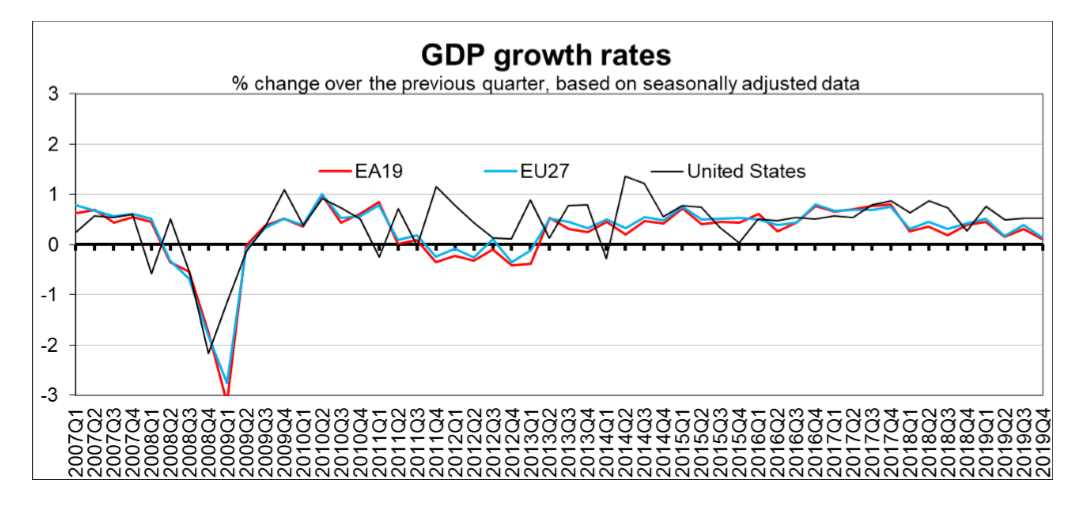
Q4 2019 GDP growth by member state
Among European Union (EU27) member states, Ireland (+1.8%), Malta (+1.7%) and Romania (+1.5%) recorded the highest Q4 GDP growth (QoQ compared to Q3). Negative growth was observed in Greece and Finland (both -0.7%), Italy (-0.3%) and France (-0.1%). In Germany, the GDP was unchanged.
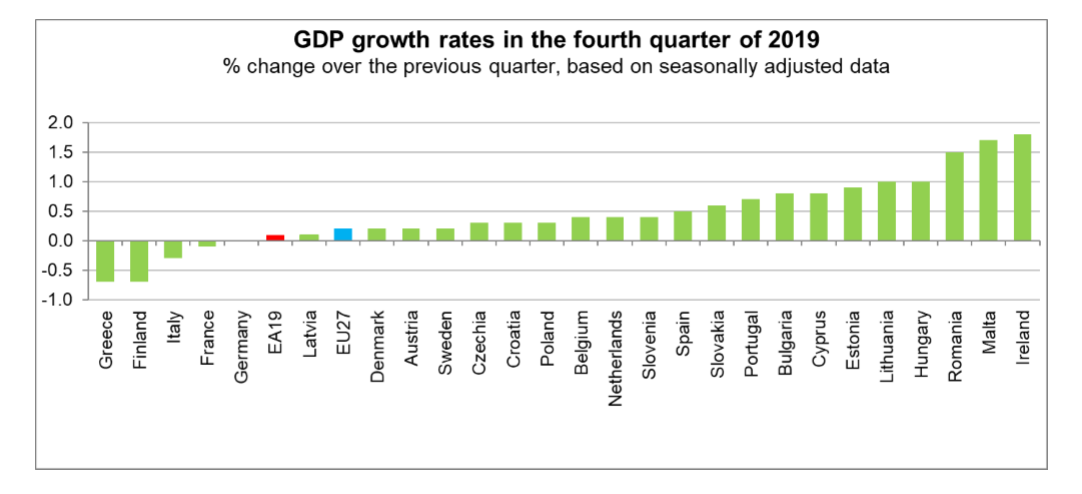
2019 growth
GDP growth for the European Union (EU27) was 1.5% in 2019, it fell from growth of 2.1% in 2018.
GDP growth for the Euro Area or Eurozone (EA19) was 1.2% in 2019, it fell from growth of 1.9% in 2018.
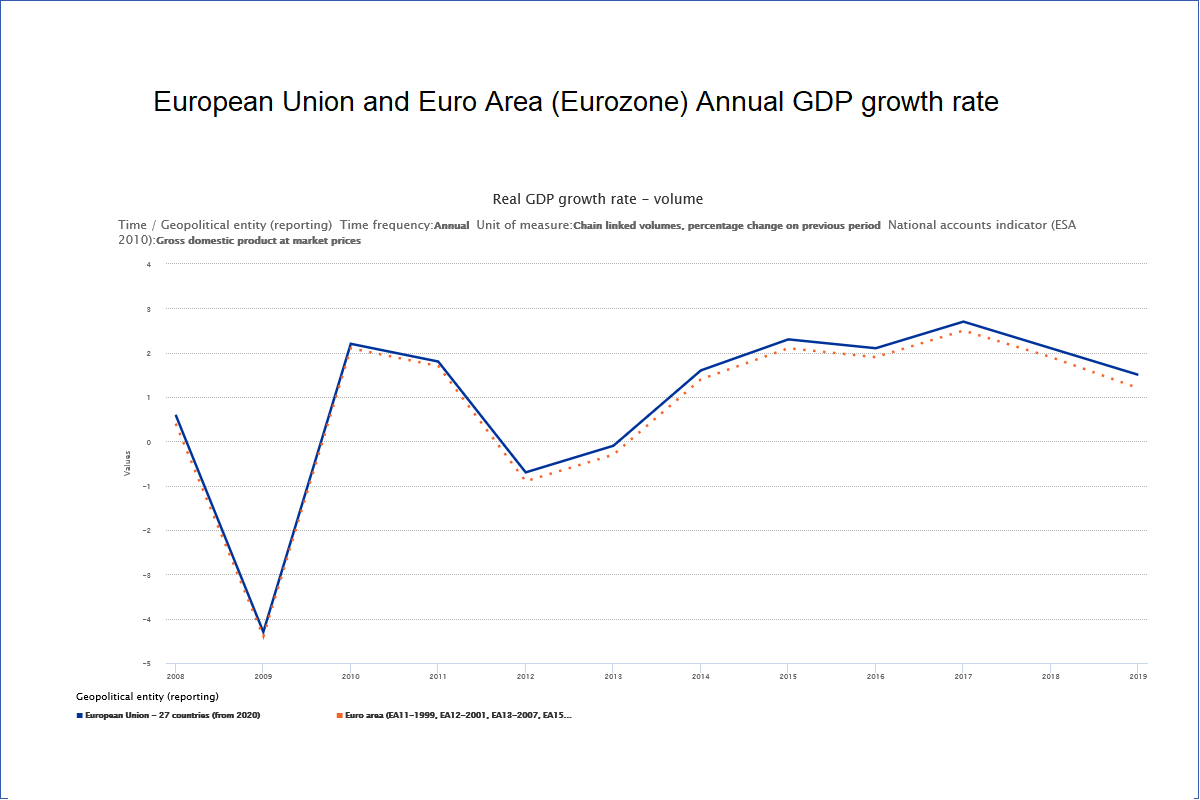
2019 growth by member state
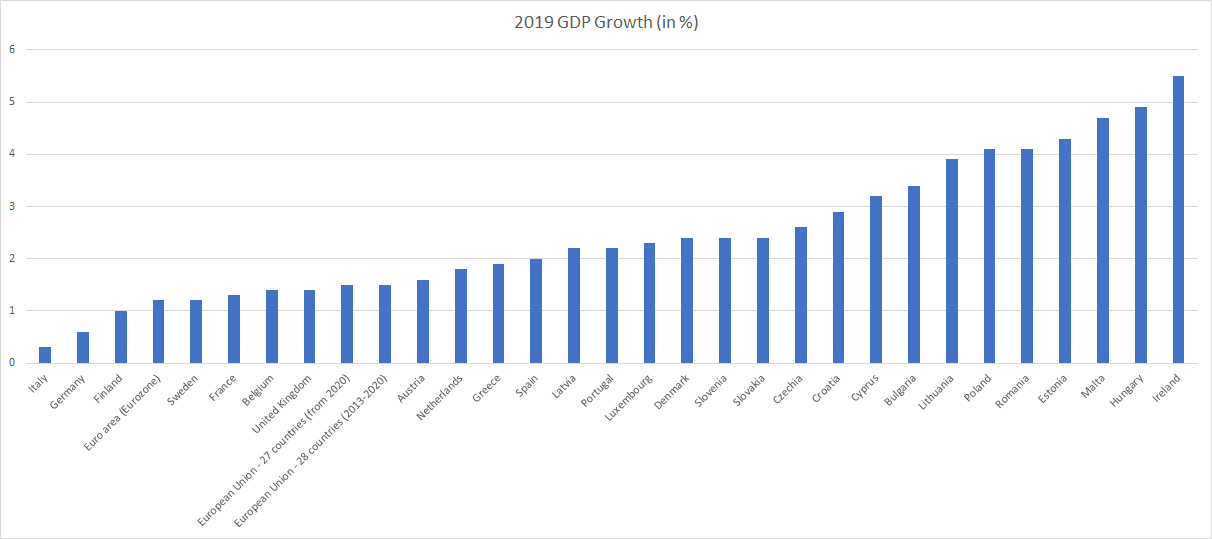
Ireland (5.5%), Hungary (4.9%), Malta (4.7%) had the highest growth rates in 2019. Italy (0.3%), Germany (0.6%) and Finland (1%) had the lowest growth rates in 2019 amongst member states. The German economy, the largest in the European Union saw significantly slower growth in the second half of 2019.
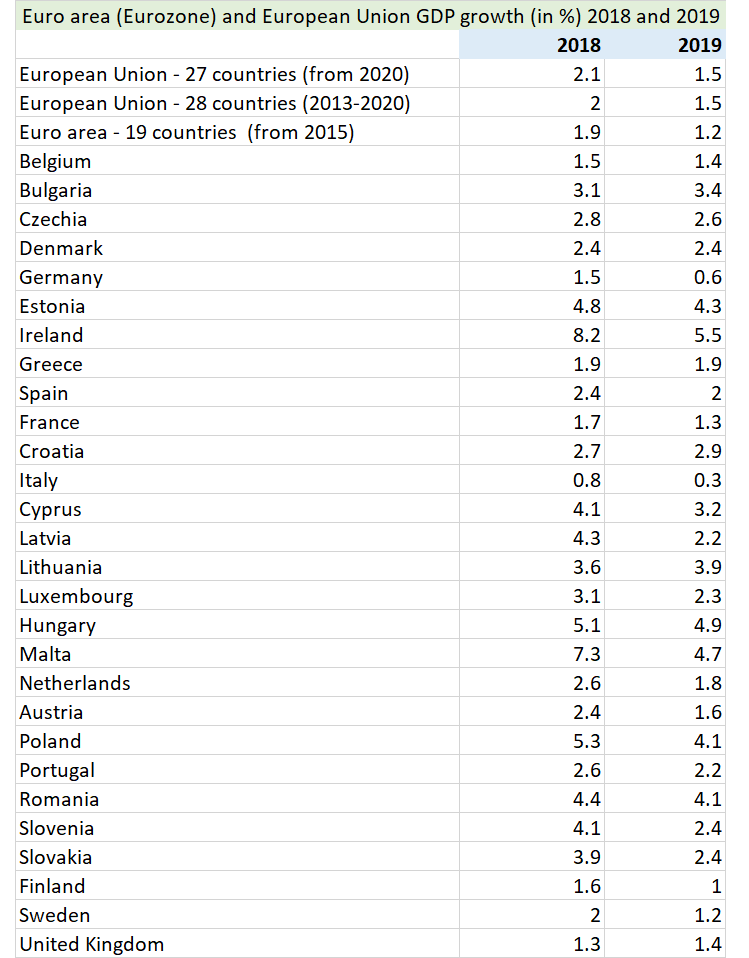
The Eurozone or Euro area (EA19) currently includes Belgium, Germany, Estonia, Ireland, Greece, Spain, France, Italy, Cyprus, Latvia, Lithuania, Luxembourg, Malta, the Netherlands, Austria, Portugal, Slovenia, Slovakia and Finland.
The European Union (EU27) currently includes Belgium, Bulgaria, Czechia (formerly the Czech Republic), Denmark, Germany, Estonia, Ireland, Greece, Spain, France, Croatia, Italy, Cyprus, Latvia, Lithuania, Luxembourg, Hungary, Malta, the Netherlands, Austria, Poland, Portugal, Romania, Slovenia, Slovakia, Finland and Sweden.
The European Union (EU28) includes Belgium, Bulgaria, Czechia (formerly the Czech Republic), Denmark, Germany, Estonia, Ireland, Greece, Spain, France, Croatia, Italy, Cyprus, Latvia, Lithuania, Luxembourg, Hungary, Malta, the Netherlands, Austria, Poland, Portugal, Romania, Slovenia, Slovakia, Finland, Sweden and the United Kingdom. The United Kingdom officially left the European Union on January 31, 2020.